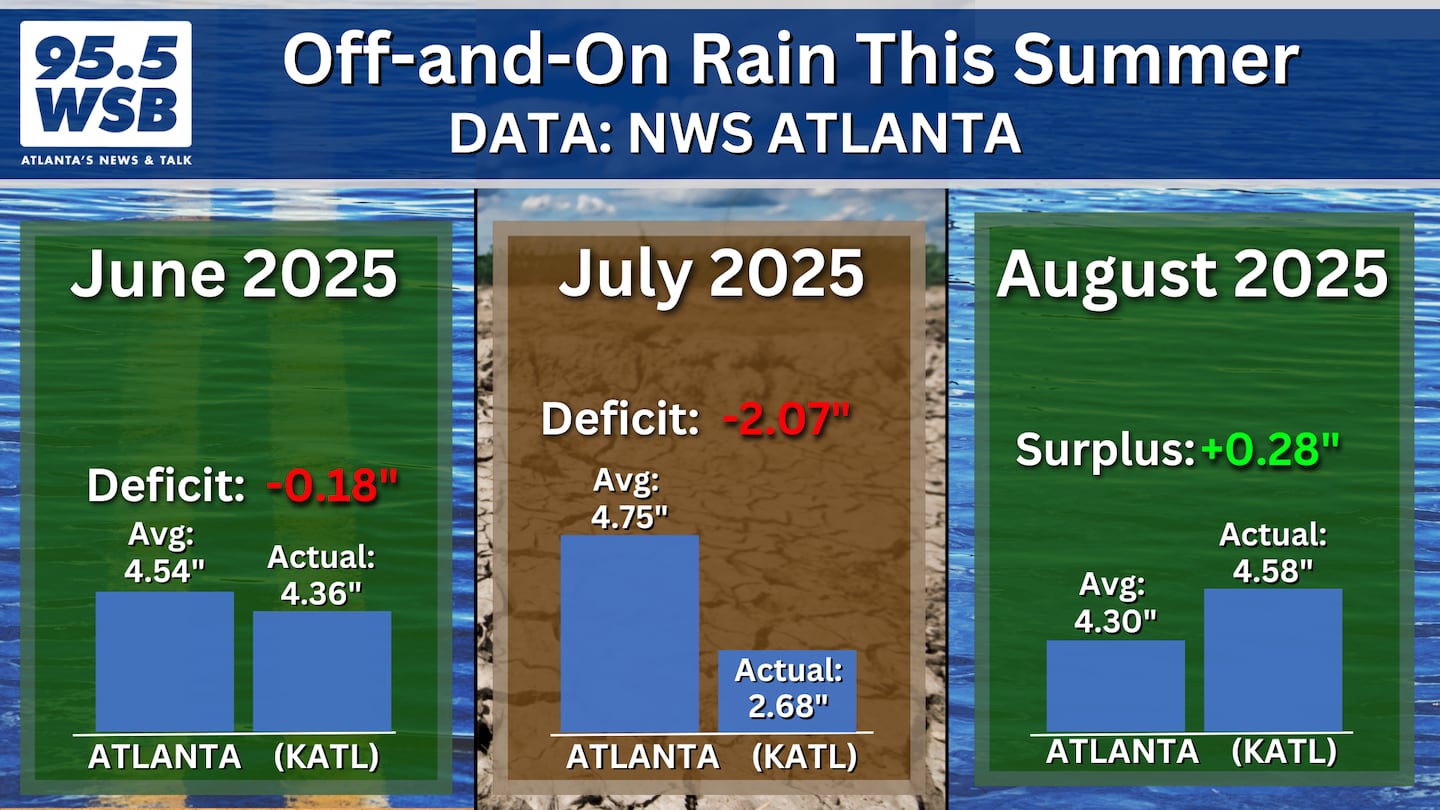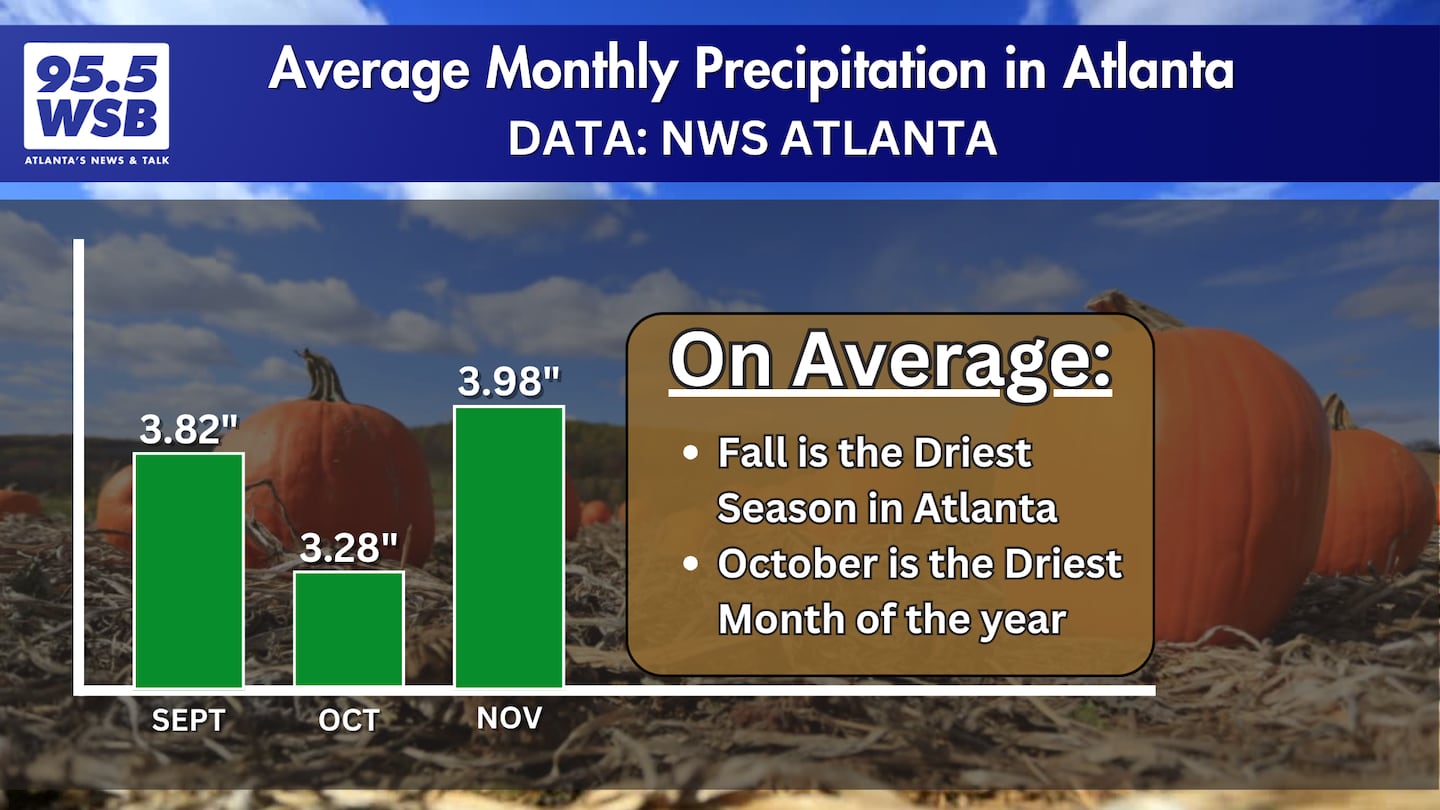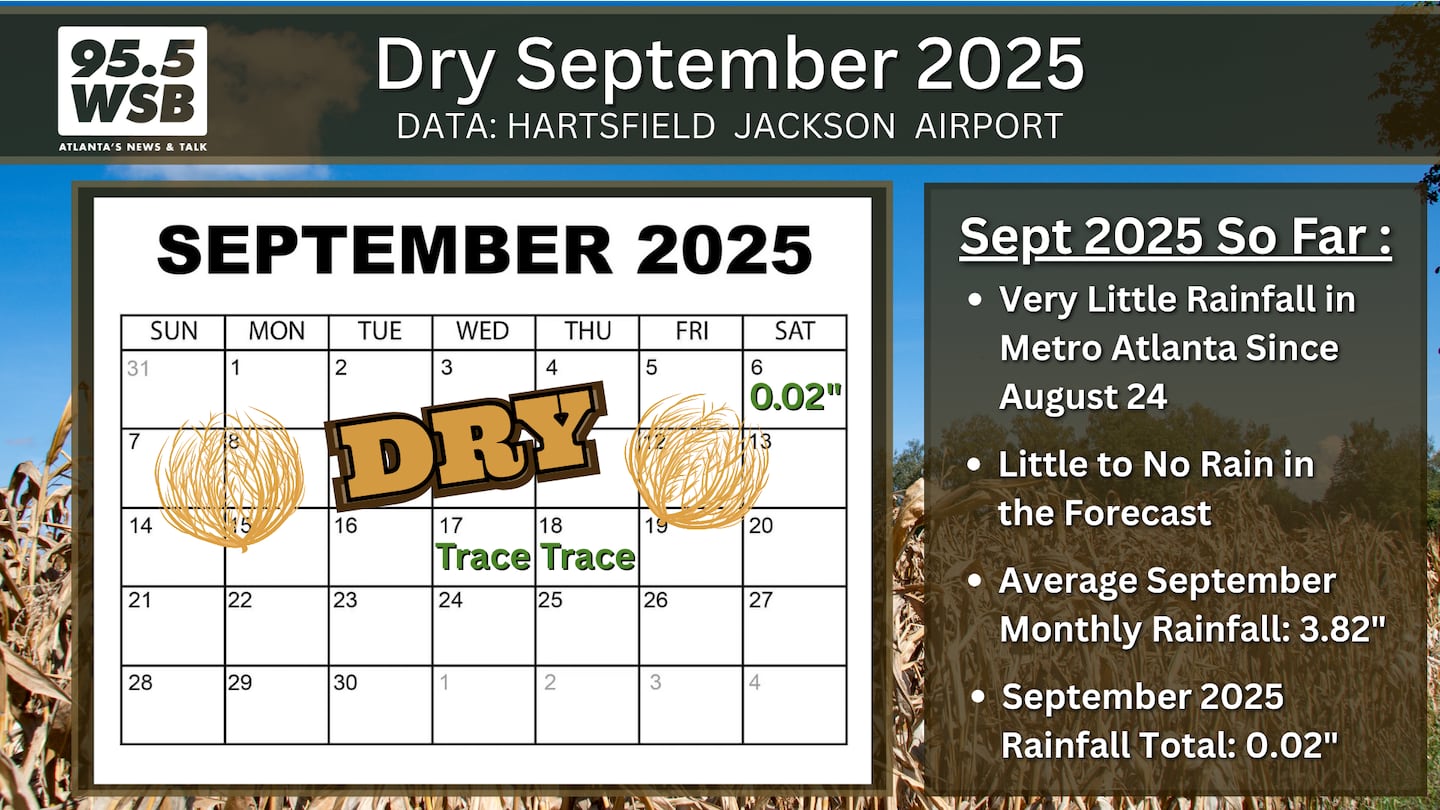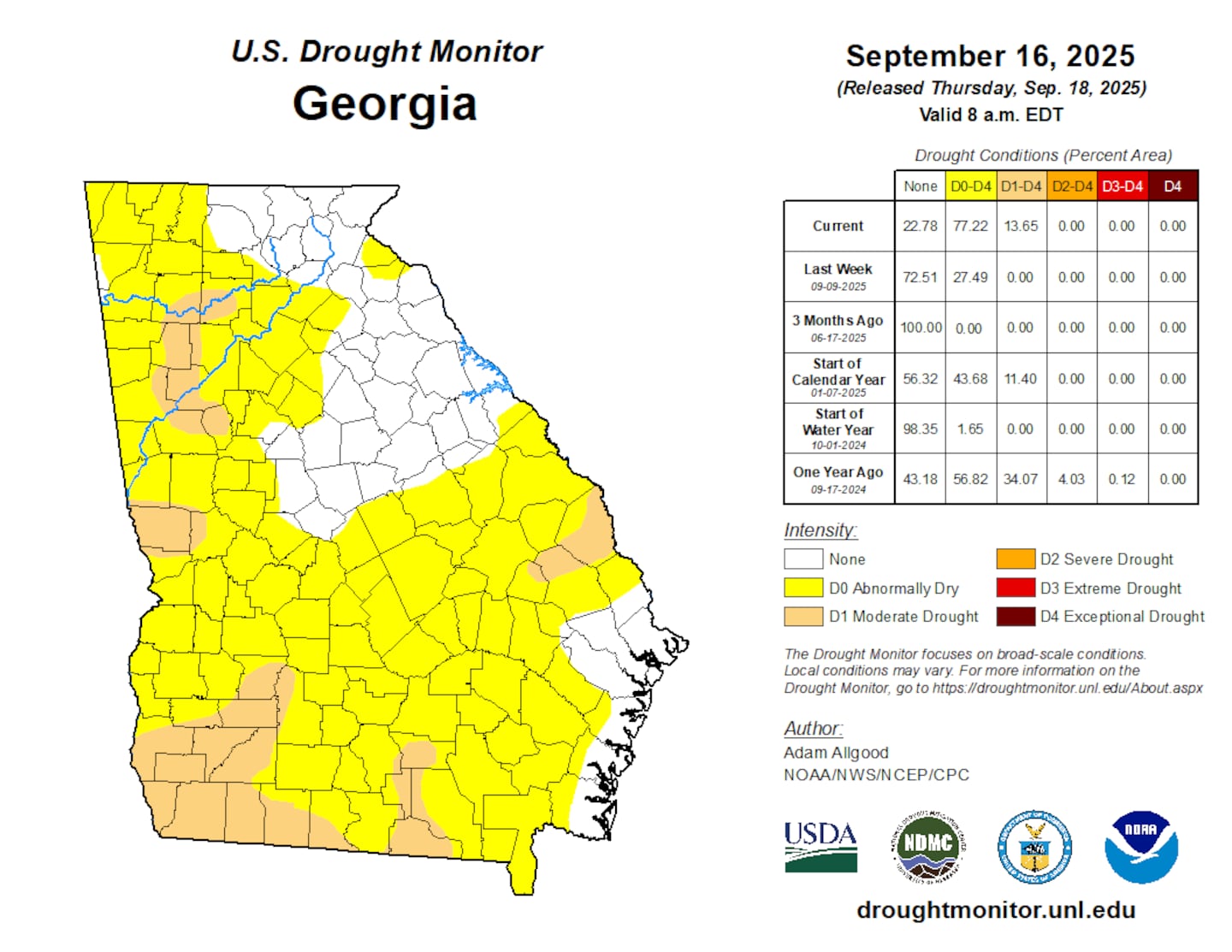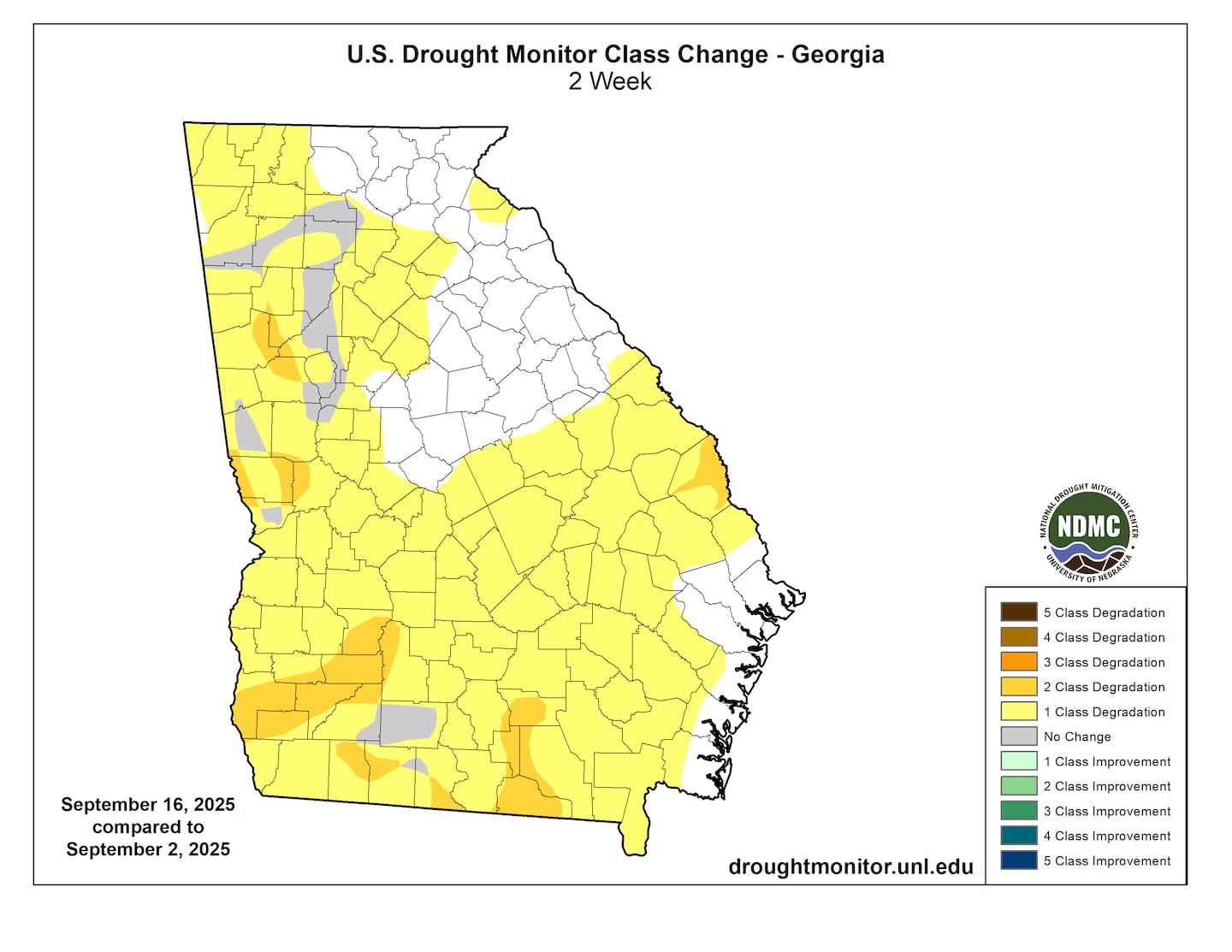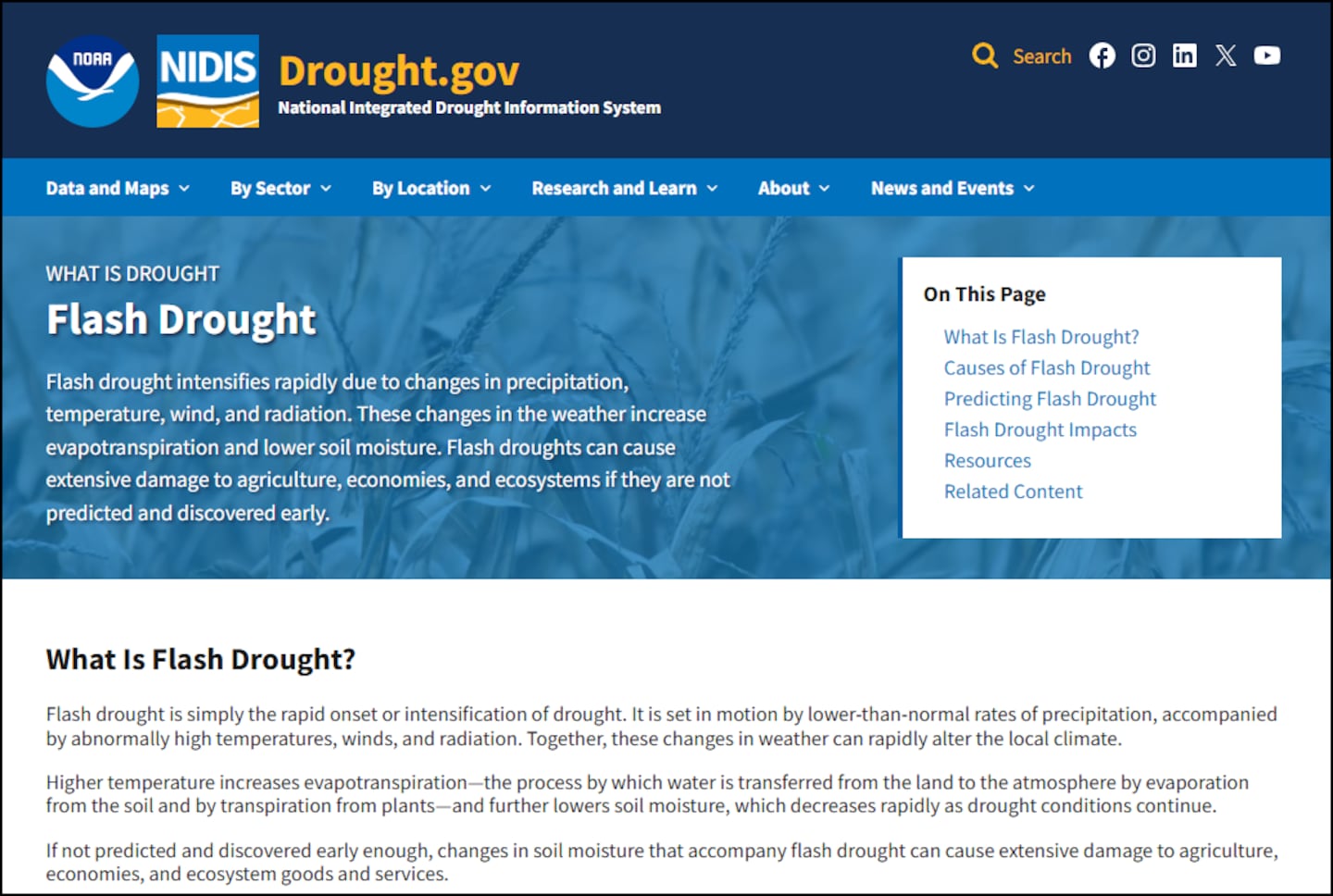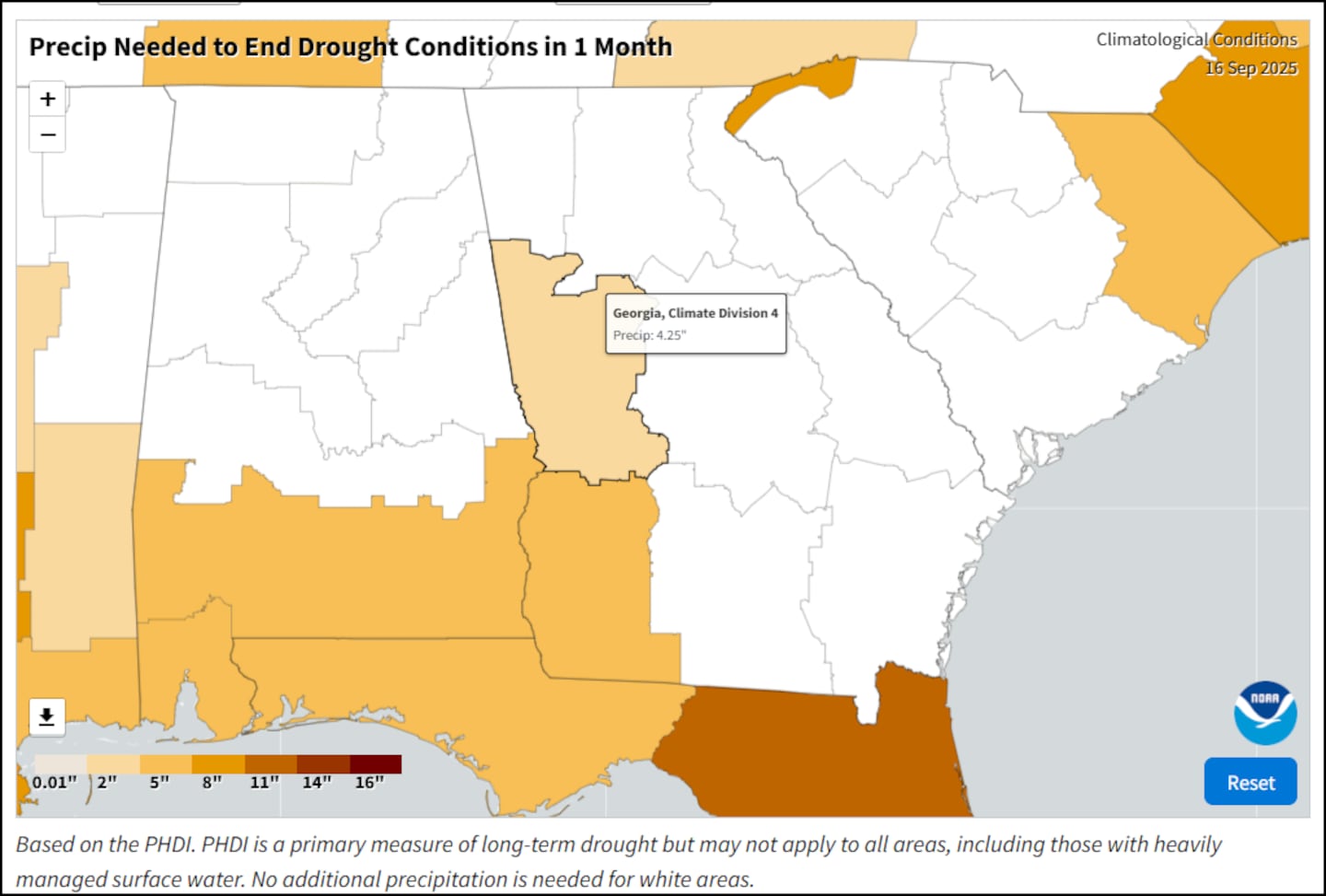I know what you’re thinking: It rained nearly every day in June, and it rained heavily throughout early August, so how are we in a drought?!
The issue is that the pattern has flipped and we are now in a drier trend -- but our trees, crops, and vegetation still require regular watering through the late Summer and early Fall months.
The summer “stockpile” of rainwater mitigated drought conditions through July and August, but soil conditions are now deteriorating as we head into the dry Fall months.
Where Did the Rain Go?!
September 2025 rainfall has been limited to the 6th of the month, when a line of thunderstorms rolled through Metro Atlanta. My house received about 5 minutes of rain, and the Atlanta Airport received a paltry 2-one hundredths of an inch of rain that day.
This was the same day where thunderstorms rolled into Athens and delayed the UGA vs Austin Peay game; over 2 inches of rain fell during the day.
As a result, eastern Georgia areas -- including Athens -- are not experiencing nearly as dry conditions compared to further west in Metro Atlanta and the Alabama state line.
Nevertheless, the National Weather Service as well as the National Integrated Drought Information System are highlighting an area in west Georgia where drought conditions will likely increase if little to no rainfall occurs in the next few weeks.
This is the same area that is now experiencing Moderate (D1) Drought conditions as of the September 16 Drought Monitor.
What Is A Flash Drought?
According to the National Weather Service, “the generally accepted definition of flash drought is a two-category degradation over two consecutive weeks... Without significant rainfall (>1-2″ per week), more degradations can be expected..."
“Drought Information Statements will be issued when at least one county is in D3 Extreme Drought conditions. They are released every-other Thursday.”
With little to no rainfall in the forecast for the next 5 days, drought conditions are expected to worsen as a flash drought develops over western Georgia.
What Are the Local Impacts of the Drought?
With Moderate (D1) Drought conditions now in western Metro Atlanta, local impacts include:
- Crops now vulnerable due to low soil moisture
- Lawns and gardens require more watering
- Stream, pond levels lower; water temperatures increase
- Trees become stressed, prematurely drop leaves
How Much Rain Is Needed to End the Drought?
According to NOAA and Drought.gov, western Georgia will need as much as 4 to 5 inches of rainfall in the next 4 weeks in order to improve the drought conditions.
However, little to no rain is in the forecast for Metro Atlanta until the middle to end of next week.
Share Your Fall Observations With Me!
Facebook: Christina Edwards WSB
Instagram: ChristinaWSBwx
Twitter: @ChristinaWSBwx
TikTok: @ChristinaEdwards955WSB
©2025 Cox Media Group


